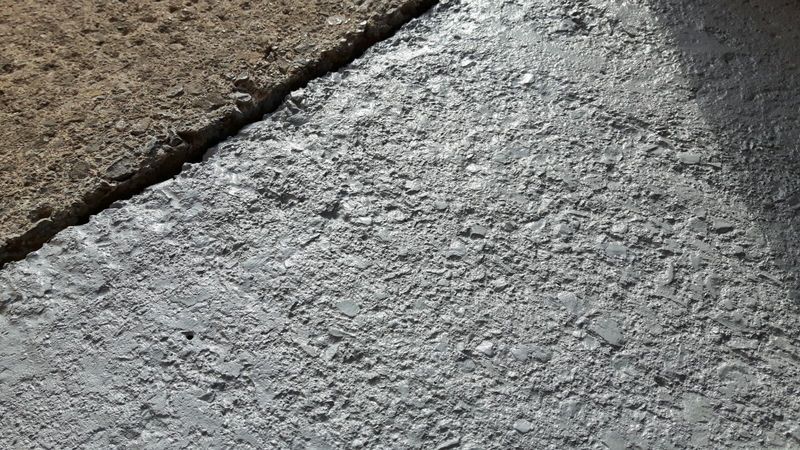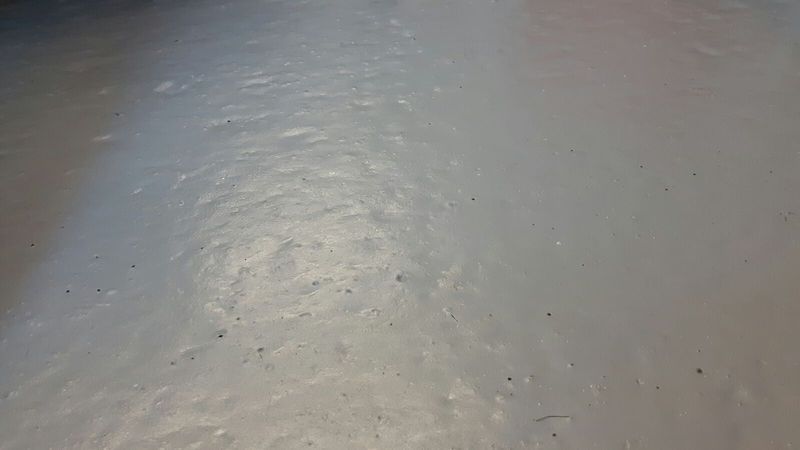- This topic has 19 replies, 15 voices, and was last updated 7 years ago by tillydog.
-
Painting garage walls and floors
-
mayanFree MemberPosted 7 years ago
Brand new shed, concrete floor and concrete block walls.
Whats the best way to seal and paint the walls and floors?
Do i need to seal them first?
A lot of the masonry paint I’ve seen is for exterior, which presumably adds waterproofing when I dont need it. Are there specific interior masonry paints?
Any DIY alternatives like a mix of PVA etc??thanks
IHNFull MemberPosted 7 years agoWalls – just get a big tub of the cheapest masonry paint you can find and a masonry paint brush. Striaght onto the wall, but worth giving them a brush down first.
Floor – Proper floor paint is expensive but worth it. Again, brush down first.
wwaswasFull MemberPosted 7 years agoWith the floor – make sure you read instructions re: temperature during application or it’ll never dry.
Also, concrete floor may need a *long* time to dry completely before beign sealed.
anotherdeadheroFree MemberPosted 7 years agoI asked this when I got a garage 8 years ago now. Loads of people said there was no point sealing the concrete floor, just use several coats of decent concrete floor paint.
Consequently, earlier this year I spent a lot of time and effort sealing the floor with watered-down PVA (3 coats, I really didn’t want to have to do it a third time!), then repainting the floor.
Similarly for walls. Lots of people said just to use cheap emulsion. If, like me, you have single-skin brick or concrete walls which weep moisture even slightly, the emulsion will run or effloresce (i.e go powdery and brush off). So I re-did them with masonry paint. (Single-skin walls can get damp even with dampcourse and no obvious water intrusion).
For walls you can get external waterproof sealer. However, my garage abuts a neighbour’s garden and he has a load of stuff growing against the wall and wasn’t happy with me getting to the wall to do this.
hammyukFree MemberPosted 7 years agoScrewfix No Nonsense floor paint.
Same stuff on the walls too.natrixFree MemberPosted 7 years agoI found it cheaper to seal my garage floor and then paint it, as that way I used less of the expensive paint.
mayanFree MemberPosted 7 years agonatrix, what did you seal it with? a bought one or a home made one?
wwas, when you say a “long time” – how long? its been down a couple of weeks now and its probably gonna be another 3 or 4 weeks before the builders finish the house and move there tea room out of my new bike shed so i can paint it
mark90Free MemberPosted 7 years agoRule of thumb for new concrete floor is to allow 1 day per mm depth to dry out before painting.
Remove the laitance from the concrete before applying any coating. It is a weak powderly layer on the top where the water rose to when being laid. Any coating adhering to the laitance layer will come away easily with the laitance. A good wire brushing is a diy option if not too big an area.
‘Water’ down the first coat of paint 10-20% with suitable thinners for the paint you are using, apply with a masonry paint brush, working well into the floor texture. This will soak into the floor giving a good bond. Apply 2nd/3rd coats soon after to promote good bonding between paint layers. IMHO this is a better approach than trying to seal the floor with PVA and then get the paint to sit on top of that.
Similar for walls, make sure clean and dust free and water down the first coat 10-20%.
I had good results with Bradite PU floor paint (white spirit thinners) and Sandex water based masonry paint (was on offer at Screwfix for a good price at the time).
Am currently doing my ‘old’ garage the same way as I did above for the new garage extension.
mark90Free MemberPosted 7 years agoThis is a picture of my ‘old’ garage floor that has just been cleaned up and had a 20% watered down coat of Bradite applied to show how the paint should soak in and seal the concrete. The concrete is a bit crappy as it is the original 1970’s garage.
The new garage extension after painting (2 years ago). 1 watered down coat applied by bush, a full strength coat applied by brush and a final thinner coat applied by roller. Brush was better for working the paint into the texture. With a smoother finish you might get away with a roller.
The new garage floor two years on in the area in front of my work bench which gets the most foot fall.
There is a little wear on the high spots and a few chips if I’ve dropped a spanner or something, but no lifting or peeling.
FrankensteinFree MemberPosted 7 years agoLooks great!
Not sure if my garage gets warm enough to dry the floor paint now it’s cooler.
I could run a heater and paint a side a day.
fozzieFree MemberPosted 7 years agoDon’t know about floor paint, but did my garage walls with high gloss masonry paint.
The brick bits covered well, but the blockwork bits soaked the paint up like a sponge, I had to work it in well with the brush which took ages and used twice the paint.mark90Free MemberPosted 7 years agoI think I used about 20 liters of paint on the three walls in the photo up there. That was for 3 coats and well worked into the blocks giving total coverage. In hindsight I should have specified paint grade blocks for the build.
ourmaninthenorthFull MemberPosted 7 years agoAfter filling in a few gaps* in the white paint on the walls last Saturday, I can assumer you that cheap emulsion does work.
After several coats.
The floor is already painted, but it’s wearing away. I’m just going to lay some Klikfor tiles over the top.
*Apparently painting round objects was easier than moving them to get a complete covering. Other similar “efforts” by the previous owners are available throughout the house.
@ mark90– love the surface mount electrics – did you DIY or GSI? I need to sort something similar.
nwmlargeFree MemberPosted 7 years agoIf you are painting the walls I would recommend a masonry roller, it halved the time I spent on painting.
mark90Free MemberPosted 7 years agoI found a masonry roller still didn’t work the paint well enough into the texture of my admittedly rough blocks. Which is why I reverted to brushing the first two coats. With better blocks (paint grade) a roller would be no bother, and much quicker.
I did most of the electrics myself, then got a sparky mate to come in to make the final connections and check it over. I’ll be extending the ring around the rest of the garage and putting new lights up soon. It’s all 2.5mm singles in 20mm trunking.
czthompsonFull MemberPosted 7 years agoI used the expensive stuff on the workshop floor. Ended up costing nearly 100 pounds. However has lasted amazingly (8 years so far) compared to the brother in laws..
natrixFree MemberPosted 7 years agonatrix, what did you seal it with? a bought one or a home made one
A bought one
That’s some good advice from Mark90 on floor prep. To check whether floor has dried out enough you can tape a square of polythene down, leave it 24hrs and check for condensation. If there is condensation you need to let it dry out a bit longer before painting.
SundayjumperFull MemberPosted 7 years agoI must have been really lucky. Cheap emulsion on the walls and Screwfix floor paint on the floor. No prep apart from running a broom over the lot. Four years later and no problem with any of it falling off.
<shrug>
tillydogFree MemberPosted 7 years agoFor block walls, give them a brush over with a cement wash first. Dirt cheap, and quick to do. Subsequent painting will be much quicker and use far less paint.
For the floor, don’t forget to start at the door and work your way towards the most inaccesible corner. Pack sandwiches.
The topic ‘Painting garage walls and floors’ is closed to new replies.


